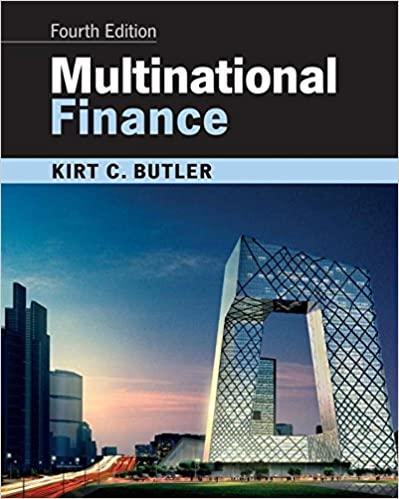Directions: You will need to complete this assignment in this file. You are expected to work independently on this assignment (as with ALL assignments). Your answer(s) to the problems must be clearly identifiable, I will not "hunt" for your answer or assume what your answer is. Answers should be presented as if you were entering them into the course required calculator, the TI BAII Plus (be sure to watch the supplemental video Time Value of Money Calculations using the T1 BAll Plus prior to completing this assignment) Part I: Identifying the TVM components. In this part, you may not need to solve the problems; you will need to map the information from the problems to the appropriate time value of money (TVM) component. There are five components to every time value of money (TVM) calculation (4 points each) Present value (PV) - the value of the cash flow today Future value (FV) - the value of the cash flow at some point in the future N-the number of compounding or discounting periods over the life of the cash flow N=m*n; where n=the number of years and m=the number of compounding periods per year (Chapter 6 concept) 1 - periodic interest rate (either discounted/ compounded) 1=l/m; where i-annual interest rate and m=the number of compounding periods per year (Chapter 6 concept) Annuity (PMT) the value of any repeated level cash flows received or paid (discussed in Chapter 6) + Notice how these five components are the same as what is on your financial calculator. Also note that you must denote the direction of the cash flow (inflow or outflow) by entering the value as a positive or negative number, respectively. 1. Paul decides to deposit $175 into a bank account today. How much will he have in the account if he waits and withdraws the money at the end of ten years? The interest rate on the account is 3.5%. a. To solve this problem, you will need to calculate which TVM component(s)? b. How many times does compounding occur over the life of the cash flow, what is the N? c. If you were to solve this problem using your financial calculator, what would you enter for PV (be sure to indicate the direction of the cash flow)? 2. How much money will you need to deposit into an account today that pays 10% APR compounded annually in order to have $2,500 in the account six years from now? a. Based on the question above, does the cash flow of $2,500 represent a future value or a present value? How do you know? b. To solve this problem, you will need to calculate which of the TVM components? c Would the initial cash flow in this problem be a cash inflow or a cash outflow? d. Will the answer to this problem be greater than or less than $2500? How do you know? 3. You intend to buy a used BMW 330 Sports Coupe that costs $20,000. You know you will be receiving $6,000 next week from a relative. If you deposit that money into an account paying 10% interest, how long will it take you reach your goal? a. Does the price of the BMW represent a future or a present value? How do you know? b. To solve this problem, you will need to calculate which of the TVM components? c. If you were to solve this problem using your financial calculator, what would you enter as your PV? d. If you were to solve this problem using your financial calculator, what would you enter as your FV? 4. Gwen won a settlement from her car accident in 2000 of $30,000. She was a savvy investor and invested all of her money in a well-diversified mutual fund. Today, 2020, her investment has grown to $45,000. What return has Gwen's investments earned? a. Which of the TVM components does Gwen's settlement amount represent? b. If you were to solve this problem using your financial calculator, what would you enter as the FV? c. To solve this problem, you will need to calculate which of the TVM components? d. Is it possible for the solution to this problem to be a negative (less than zero) number? Why or why not. 12 B 05 2. H. 3 4 1 5 . . . . . . 6 Part II: Solving TVM problems. You may use either mathematical formulas or financial calculator inputs to solve the following problems. If you use the mathematical equations, you will need to present the general equation for each problem, the specific equation, and the answer. If you choose to use your financial calculator to solve these problems, you will need to provide all five TVM components using the following guide (8 points each): Let's say, you wanted to find out what the present value is of $400 received 3 years from now if the interest rate you could earn were 8%. PV=CPT-317.533 FV=400 N=31=8% PMT=0 (for all these problems PMT will equal 0; we discuss PMT in chapter 6) Identify the component you are solving for with CPT (just like on the calculator); highlight that component; denote the cash flow direction. Do not round any of your inputs and round your final answer to three decimal places. 5. What is the future value of $ 700 deposited for one year earning 4% interest rate annually? 6. A deposit of $300 earns an interest rates of 7% in the first year and 10% in the second year. What would be the value of the deposit at the end of the second year? 7. Determine the interest rate earned on a $1,500 deposit when $1,680 is paid back in three year. 8. What is the value in year 3 of a $500 cash flow made in year 5 when interest rates are 6 percent









